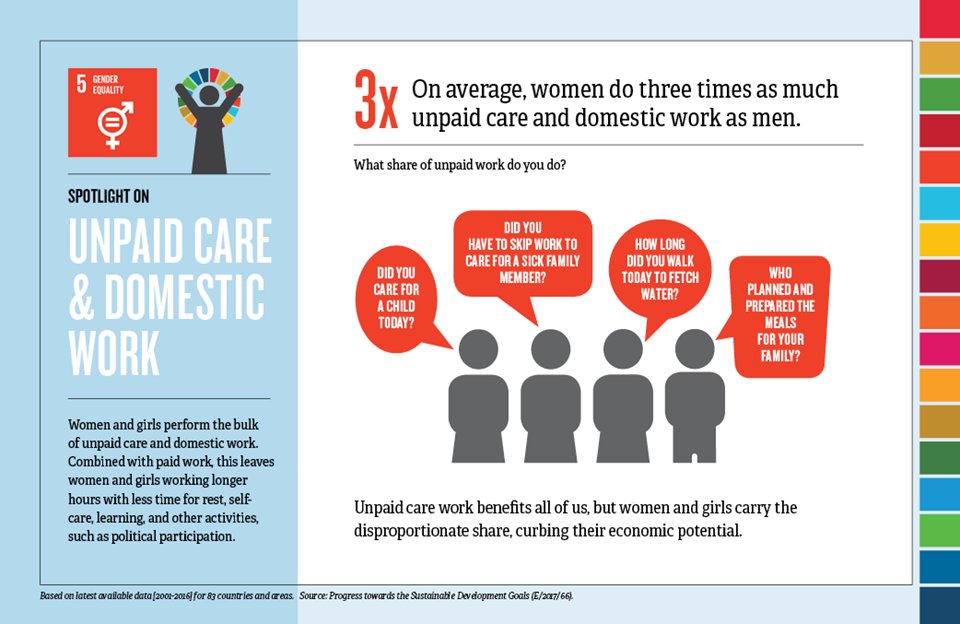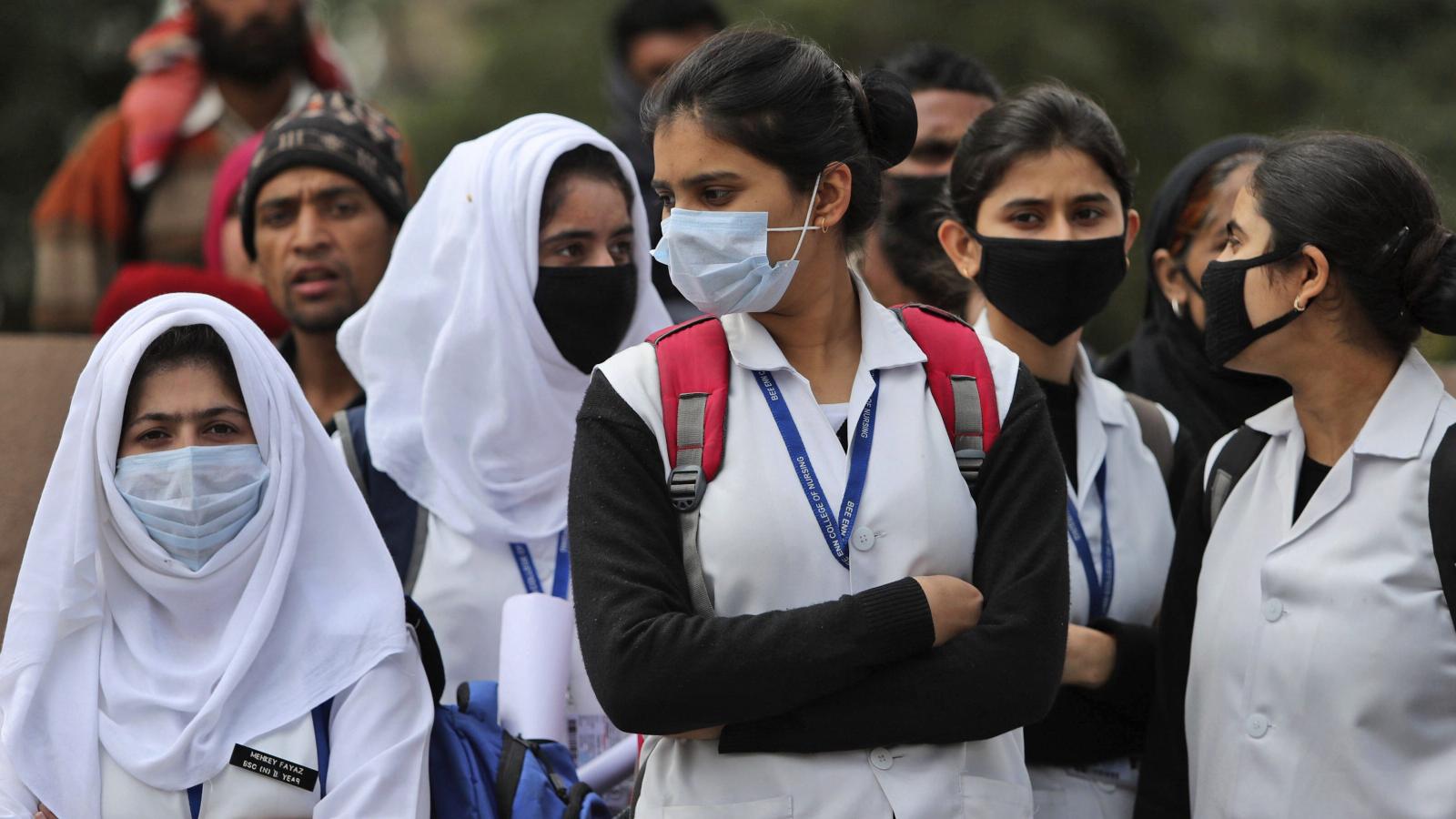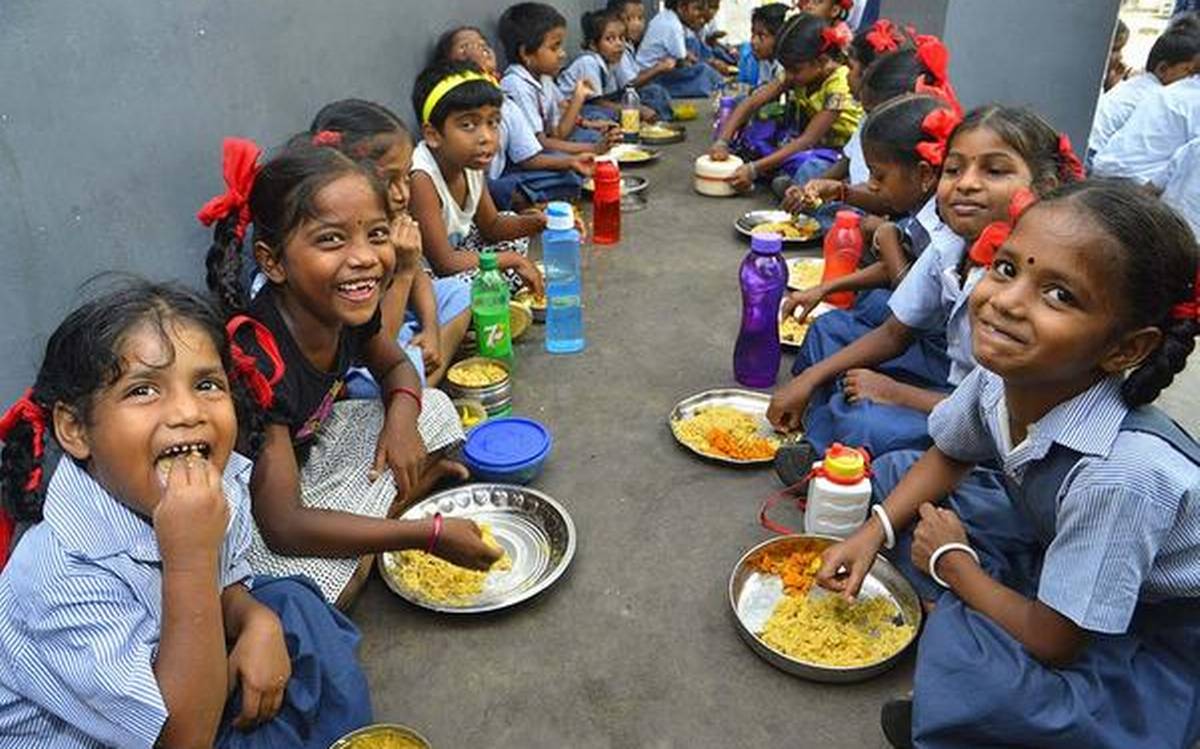COVID-19 has sent education in India into a crisis mode with school closures endangering children with abusive homes and those who sustain on mid-day meals. It has further made learning subservient to bandwidth speeds with students expected to be productive during a pandemic. While the home-based education model puts female students at a disadvantage due to the gendered nature of care work, the leap to online education exposes the socio-economic privileges that dictate access to quality education in India. Moreover, increased internet usage by children and youth raises serious concerns over cyber bullying and abuse.
School Closures: Locked Out Of Safe Havens
The nationwide closure of schools and colleges due to COVID-19 highlights the significance of brick-and-mortar educational spaces. Schools and colleges function as a miniature society where students from diverse backgrounds find a level-playing field to interact with their socio-economic realities. Students, by way of these socialisation processes, not only improve their learning outcomes but also learn to manage their emotions, establish healthy relationships, and develop empathy. This absence of socialisation, especially at a challenging time like the COVID-19 pandemic, poses grave risks for the emotional and social development of students.
WITH INDIA WITNESSING AN INCREASE IN INSTANCES OF GENDER-BASED VIOLENCE AND CHILD ABUSE DURING COVID-19 LOCKDOWN, SCHOOL CLOSURES LEAVE CHILDREN WITH NO PSYCHOSOCIAL AND SEXUAL HEALTH SUPPORT.
Also, around 11.59 crore children in India, according to the Ministry of Human Resource Development (MHRD), depend on schools for their stipulated nutritional intake under the Mid-Day Meal (MDM) Scheme. The abrupt discontinuation of the food security programme puts the nutritional health of children from economically backward sections in jeopardy. In a suo moto cognisance of the same, the Supreme Court on 18th March, 2020 ordered the states to issue a uniform policy on expediting their food relief efforts for such children covered under the MDM Scheme.
Schools also double as health facilities – especially in the case of females who depend on them to learn about sexual-reproductive health – and provide safe spaces for children with abusive homes. With India witnessing an increase in instances of gender-based violence and child abuse during COVID-19 lockdown, school closures leave children with no psychosocial and sexual health support.
Furthermore, the economic ramifications of COVID-19 and the sustained closure of educational centers for a prolonged period pose the threat of driving children, primarily girls, from economically-weaker families out of the education system altogether. The loss of jobs and reduced wages can push them towards child labour to support their distressed families, making their re-entry into schooling all the harder. Therefore, the Indian government needs to implement school/college closures in a manner that neither harms the learning nor the health prospects of vulnerable and marginalised students.
Crisis Education/Education Crisis
Education in a time of crisis suffers due to disruption in learning environments, stressed health and nutrition infrastructure, and students’ health and social anxieties. Despite that, education bears the potential to become a site of normalcy and provide students with healthy coping mechanisms. The current COVID-19 public health crisis presents a learning opportunity to promote scientific inquiry and good hygiene practices among students. In fact, with responsive educator (read: state) interventions, education during COVID-19 can even go on to (re)shape the attitudes of students towards their academic and career pursuits, like medicine and public administration. Therefore, a crisis education model aims not at finishing the syllabus or squeezing maximum productivity out of students but instead on building solidarities and compassion.
IN FACT, WITH RESPONSIVE EDUCATOR (READ: STATE) INTERVENTIONS, EDUCATION DURING COVID-19 CAN EVEN GO ON TO (RE)SHAPE THE ATTITUDES OF STUDENTS TOWARDS THEIR ACADEMIC AND CAREER PURSUITS, LIKE MEDICINE AND PUBLIC ADMINISTRATION.
However, in India, a push for the continuation of education during COVID-19, not only uses a market-driven approach to maximise student productivity but also neglects the socio-economic drivers that govern its access and quality. Take for example, the pivot to home-based education. The average household size in India is 4.3, and the per capita space available at home to about 59.6% population of the country is even less than a room. Further, restrictive home-quarantine measures make it difficult to replicate the sustainable learning environment provided by schools and colleges. A lack of physical space can affect the emotional and mental well-being of students and thereby their learning outcomes.

Due to a lack of direct teacher supervision, ensuring a growing child’s education at home becomes the onus of parents/guardians, many of whom are involved in essential services in the COVID-19 effort. Moreover, given the gendered nature of domestic care work, the responsibility of making a study routine, monitoring a child’s learning outcomes, and attending to their social needs fall ultimately on the women in a household. This burden of care work even spills over to the female students during COVID-19, in the form of household chores and care for younger siblings, due to the current absence of childcare centers and domestic help. Therefore, it restricts the time spent by them on learning, which affects their academic performance, and exacerbates the gender inequity in education.
Zooming In On E-Learning
A significant component of the continuation of education during the COVID-19 pandemic is the internet. Many schools and colleges resumed their academic sessions by conducting classes/staff meetings/interviews through video conferencing and recorded materials.
However, streamlining the e-learning model of education brings to fore the gaping internet divide in India. In a brutal irony, while the MHRD invited ideas under the Bharat Padhe Online campaign to improve the online education ecosystem, the state extended the internet lockdown in Kashmir. During a health crisis like COVID-19, when students all over the country are pursuing their education online, students and teachers in Kashmir struggle with restricted internet access.
Also read: COVID-19: A Feminist Killjoy’s Rant On Toxic Productivity In The Academy
According to the India Internet 2019 report, mobile devices are markedly the most preferred for internet access, with about 85% using the 4G connection as opposed to 6% Wi-Fi users and 4% 2G users. Moreover, 70% of India’s rural population does not use the internet actively, with low internet connectivity in the Eastern states. The report also reveals a clear gender divide with internet usage by women being half of that by men. These trends indicate how socio-economic and gender privileges affect access to the internet in India.
IN A BRUTAL IRONY, WHILE THE MHRD INVITED IDEAS UNDER THE BHARAT PADHE ONLINE CAMPAIGN TO IMPROVE THE ONLINE EDUCATION ECOSYSTEM, THE STATE EXTENDED THE INTERNET LOCKDOWN IN KASHMIR.
Cybercrimes Against Children
Not surprisingly, as digital natives, children aged 12-19 make for one-third of the entire population that uses the internet in India. However, digital nativity cannot be mistaken for digital awareness. ICT lessons on advanced collaborative systems, virtual classrooms, and safe internet practices are yet to figure in the Indian education curriculum. Therefore, overuse of the internet runs the risk of exposing children, especially females, to cyber bullying and online sexual abuse.
According to a research study, 37% of Indian parents in 2018 reported that their kids experienced some form of cyber bullying. These incidences can increase even further, given the stigmatisation and hate speech that surrounds COVID-19 on social media. Such exposure patterns can rupture a child’s understanding of the public health crisis, which can poorly influence their attitude towards other children with diverse backgrounds.
The India Child Protection Fund (ICPF) recorded a harrowing 95% surge in child pornography traffic between the period March 24-26 2020 post the announcement of the COVID-19 lockdown. On 16th April 2020, the Ministry of Home Affairs issued a press release cautioning against the popular video conferencing app Zoom, used widely by many educational centers, over privacy concerns. Therefore, to improve online education, educators, civil society, and the state must take proactive measures to ensure that the internet is a safe place for children and youth.
Also read: Children In COVID-19 Lockdown: Abusive Households And Street Children
Reinventing Learning in The Time Of COVID-19
The COVID-19 pandemic reveals the need for reassessing the Indian education system that reduces the student’s experience to competitiveness and productivity. In such unprecedented times, India requires an improvised educational model that prioritises mental and emotional health over academic performance. Teachers, who are on the frontlines of crisis education, need to be empowered to pace their lectures and assignments to adjust to students’ concerns. Most importantly, civil society and media platforms need to assume responsibility for what the children consume and learn about COVID-19 and their society.
References:
- Mark Garibaldi and Liza Josias, Designing schools to Support Socialization Processes of Students (2015)
- Habibullah Shah, Conflict and Education: Mapping the Field in Literature? (2016)
- India Internet 2019, Internet And Mobile Association Of India (2019)
Featured Image Source: Quartz





